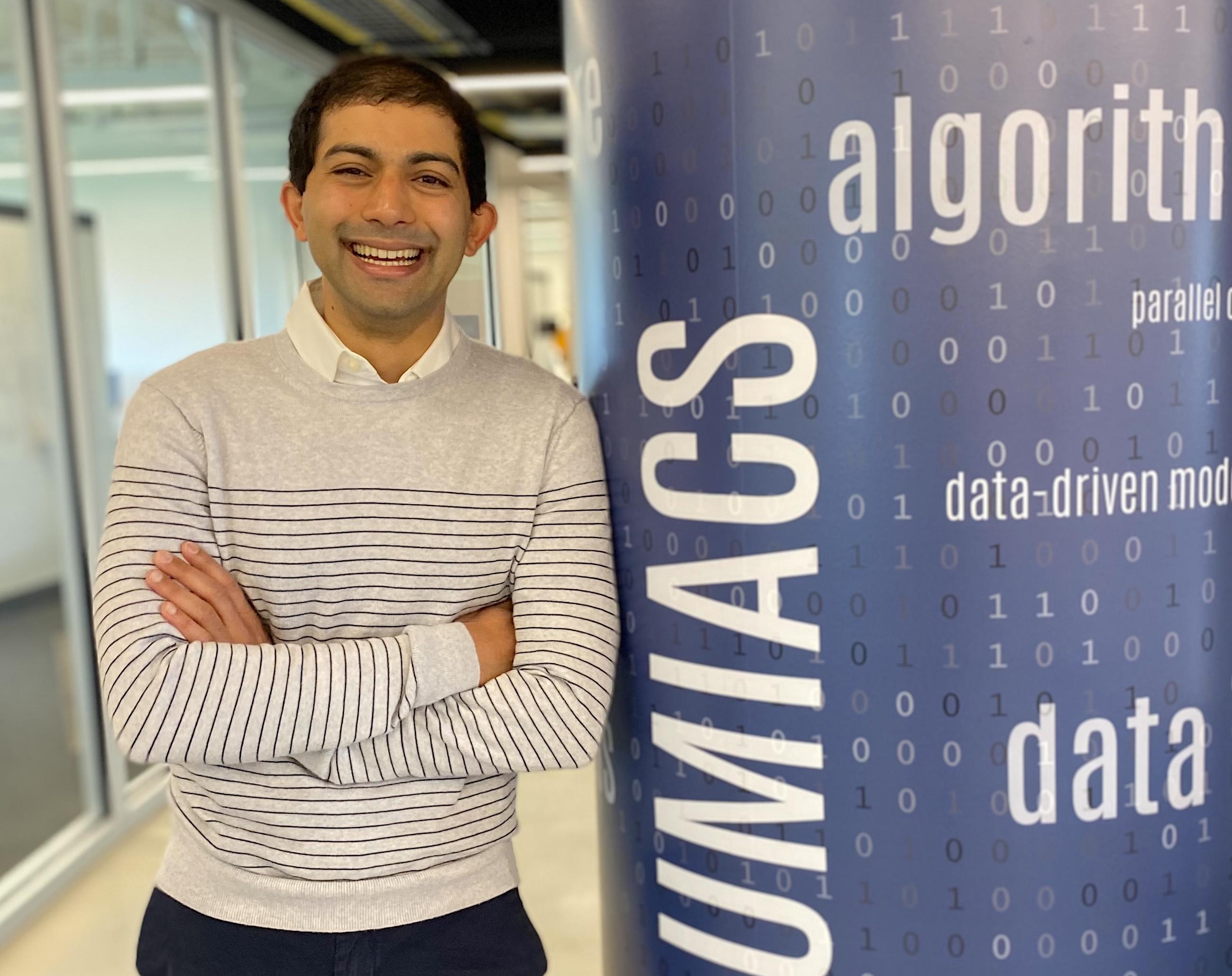
Laxman Dhulipala, an assistant professor of computer science at the University of Maryland, has been honored with the 2024 Paris Kanellakis Theory and Practice Award.
The award, one of the most prestigious given by the Association for Computing Machinery (ACM), recognizes theoretical accomplishments that have had a significant and demonstrable effect on the practice of computing. It honors Paris C. Kanellakis, a computer scientist who died in a plane crash in Colombia in 1995.
Dhulipala was part of a team recognized for their contributions to algorithm engineering, including several frameworks that revolutionized large-scale graph processing on shared-memory machines.
Other team members receiving the ACM award are Julian Shun, an associate professor of electrical engineering and computer science at the Massachusetts Institute for Technology, and Guy Blelloch, a professor of computer science at Carnegie Mellon University (CMU).
“It’s an incredible honor to have this collaborative work with Guy and Julian recognized by the ACM. They both have taught me a lot through the years,” says Dhulipala, who also has an appointment in the University of Maryland Institute for Advanced Computer Studies (UMIACS).
Dhulipala began collaborating with Shun and Blelloch in 2013 when he started his doctoral studies at CMU. Shun was also a graduate student at the time, with Blelloch serving as the duo’s academic adviser.
The CMU team began exploring how to analyze large graphs (billions of vertices and hundreds of billions of edges) on relatively inexpensive shared-memory multiprocessors. They built a sequence of frameworks that made it easier for programmers to efficiently solve a wide variety of graph problems.
These frameworks—known as Liga, Ligra+ Julienne, GBBS, Aspen and Sage—have subsequently been implemented in industry to take on real-world issues. At Google, for example, the CMU team’s foundational work was used to cluster very large graph datasets an order of magnitude faster than the previously used distributed approaches.
When Ligra was developed, Dhulipala says, the norm for analyzing large graphs was distributed systems. But Ligra has proven to be more time, energy and cost efficient than its predecessors when applied to large real-world graph problems.
Aspen addressed the growing landscape of streaming graphs, which are graphs that change in real time. It uses functional data structures to allow low-latency updates and snapshots of large graph datasets.
The ACM said the frameworks the group developed have “revolutionized large-scale graph processing on shared-memory drives. These ideas and implementations are being used in industry to handle real-world problems and have also had tremendous impact on research in the field.”
Dhulipala is the third person associated with UMIACS to receive the prestigious Kanellakis award. Hanan Samet, a Distinguished University Professor of computer science, won the award in 2011 for his fundamental contributions to the development of multidimensional spatial data structures.
And Yossi Matias, a former UMIACS graduate student advised by Uzi Vishkin, was part of a team that received the award in 2019 for their work on the foundations of streaming algorithms and their application to large-scale data analytics.
—Story by Shaun Chornobroff, UMIACS communications group
The award, one of the most prestigious given by the Association for Computing Machinery (ACM), recognizes theoretical accomplishments that have had a significant and demonstrable effect on the practice of computing. It honors Paris C. Kanellakis, a computer scientist who died in a plane crash in Colombia in 1995.
Dhulipala was part of a team recognized for their contributions to algorithm engineering, including several frameworks that revolutionized large-scale graph processing on shared-memory machines.
Other team members receiving the ACM award are Julian Shun, an associate professor of electrical engineering and computer science at the Massachusetts Institute for Technology, and Guy Blelloch, a professor of computer science at Carnegie Mellon University (CMU).
“It’s an incredible honor to have this collaborative work with Guy and Julian recognized by the ACM. They both have taught me a lot through the years,” says Dhulipala, who also has an appointment in the University of Maryland Institute for Advanced Computer Studies (UMIACS).
Dhulipala began collaborating with Shun and Blelloch in 2013 when he started his doctoral studies at CMU. Shun was also a graduate student at the time, with Blelloch serving as the duo’s academic adviser.
The CMU team began exploring how to analyze large graphs (billions of vertices and hundreds of billions of edges) on relatively inexpensive shared-memory multiprocessors. They built a sequence of frameworks that made it easier for programmers to efficiently solve a wide variety of graph problems.
These frameworks—known as Liga, Ligra+ Julienne, GBBS, Aspen and Sage—have subsequently been implemented in industry to take on real-world issues. At Google, for example, the CMU team’s foundational work was used to cluster very large graph datasets an order of magnitude faster than the previously used distributed approaches.
When Ligra was developed, Dhulipala says, the norm for analyzing large graphs was distributed systems. But Ligra has proven to be more time, energy and cost efficient than its predecessors when applied to large real-world graph problems.
Aspen addressed the growing landscape of streaming graphs, which are graphs that change in real time. It uses functional data structures to allow low-latency updates and snapshots of large graph datasets.
The ACM said the frameworks the group developed have “revolutionized large-scale graph processing on shared-memory drives. These ideas and implementations are being used in industry to handle real-world problems and have also had tremendous impact on research in the field.”
Dhulipala is the third person associated with UMIACS to receive the prestigious Kanellakis award. Hanan Samet, a Distinguished University Professor of computer science, won the award in 2011 for his fundamental contributions to the development of multidimensional spatial data structures.
And Yossi Matias, a former UMIACS graduate student advised by Uzi Vishkin, was part of a team that received the award in 2019 for their work on the foundations of streaming algorithms and their application to large-scale data analytics.
—Story by Shaun Chornobroff, UMIACS communications group